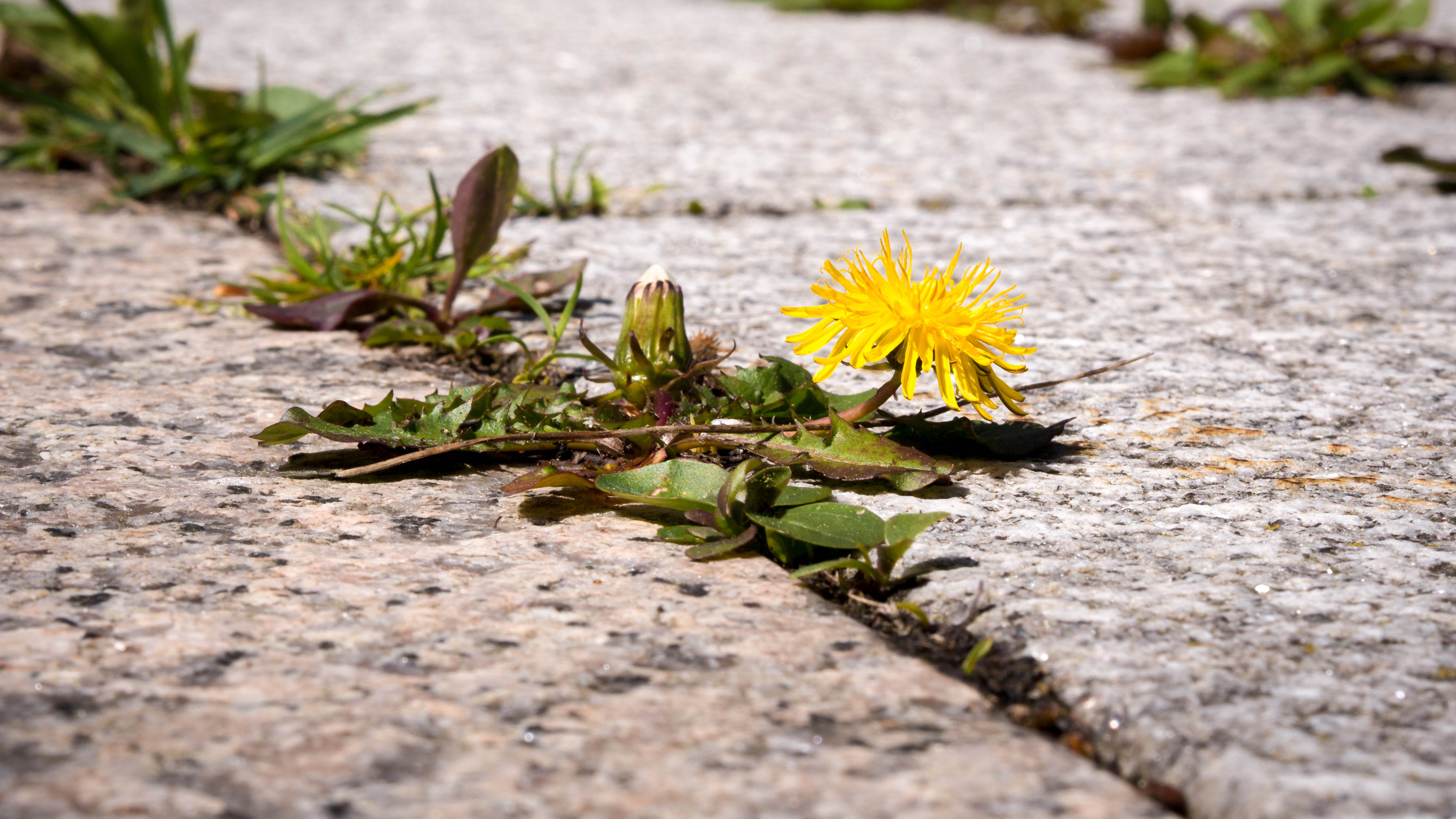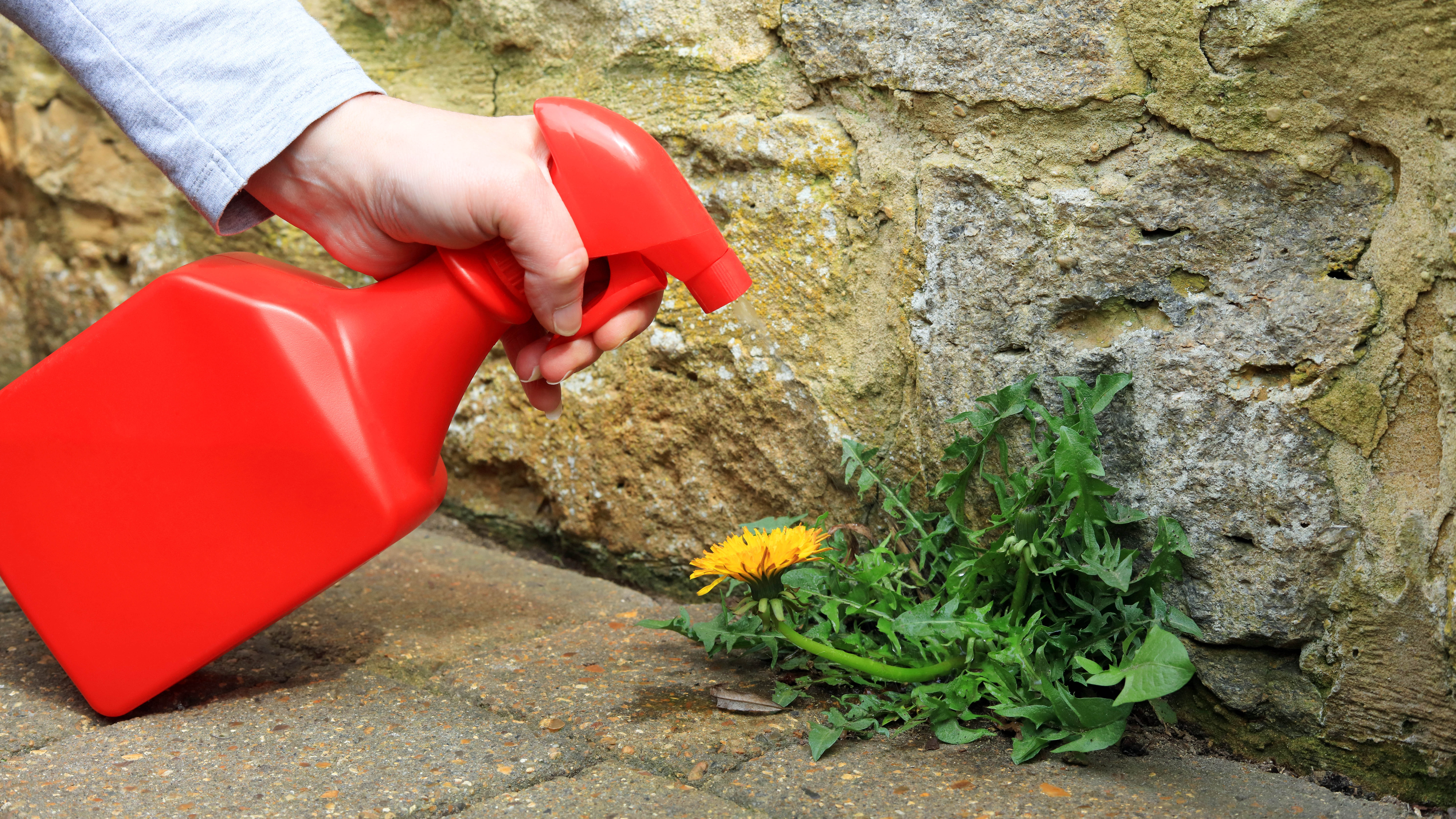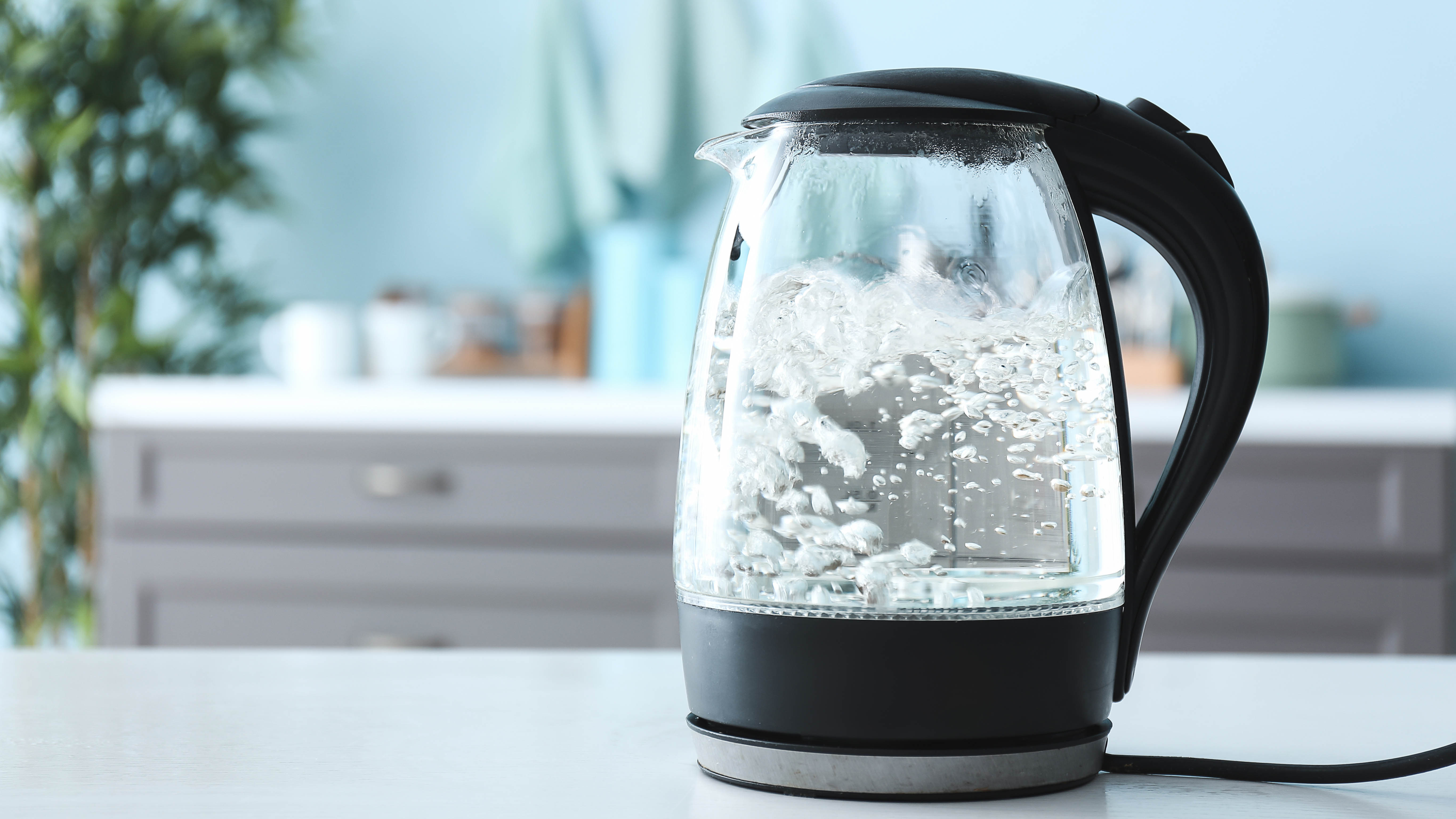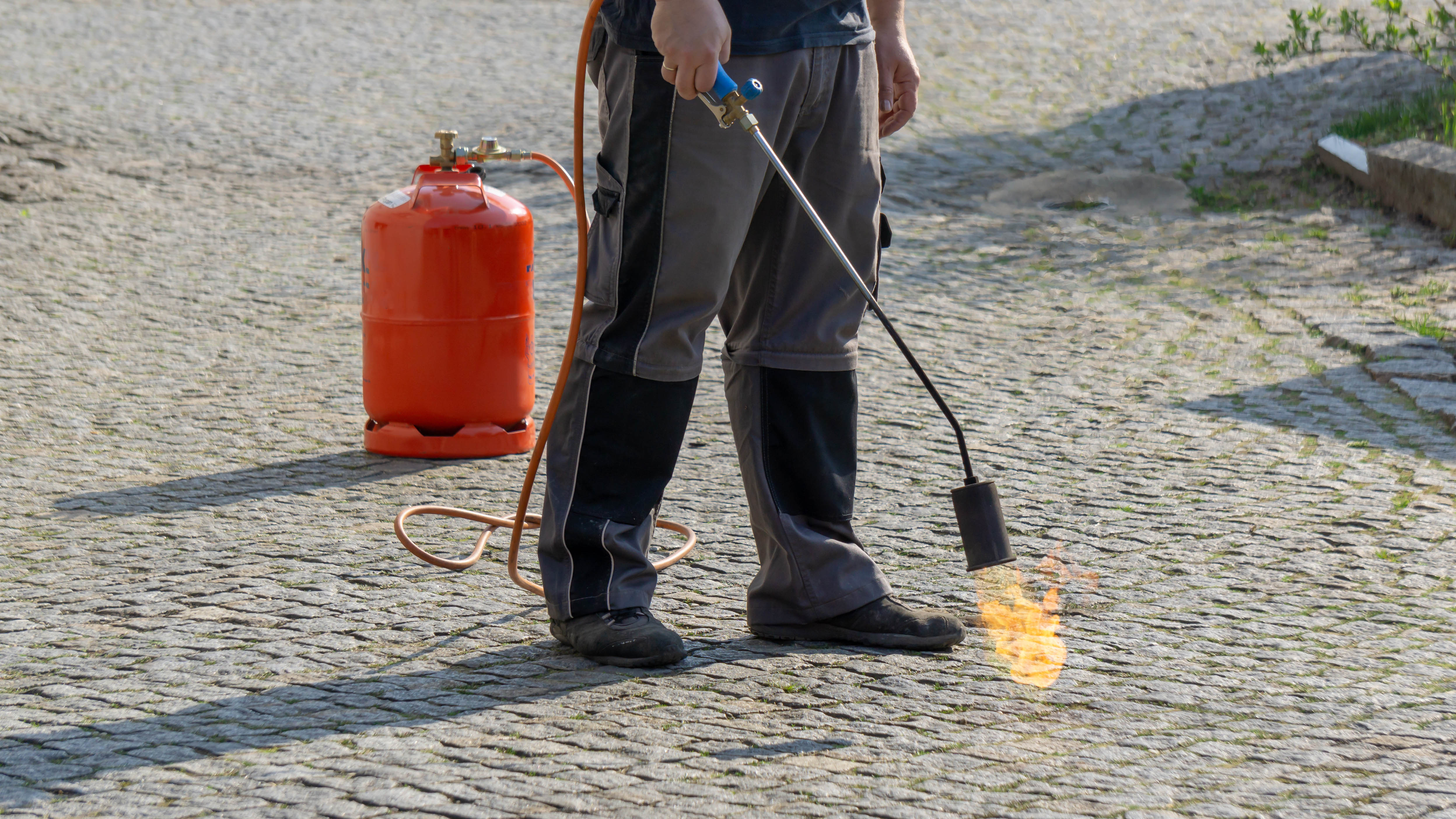7 ways to remove weeds from your patio
Here’s how you can keep your patio weed-free

In the summer heat, our patios can make for a picturesque space to sit back and relax. Or perhaps you prefer to entertain with one of the best grills, so long as you learn how to repel bugs while dining outdoors. But, in either case, one thing that can ruin the atmosphere is unwelcome weeds cropping up between the slabs. Weeds can unfortunately pop up at any time of year, and they’re so hardy and determined, that even your patio can serve as a potential home.
Should a seed find its way into the grouting, it will grow and sprout, even where moisture and nutrients are limited. Before you know it, ugly weeds will border your patio and thrive despite the trampling. Weeds are tricky to remove at the best of times, and with the roots protected by your patio, they’re arguably more awkward to deal with here.
So, even if you’ve learnt all the ways to kill weeds naturally, this can be a difficult task. Luckily, we’ve found the 7 best ways to remove weeds from your patio, so you can get the job done quickly and effectively, and make your patio look pristine in no time.
Plus, 5 surprising reasons you should let weeds grow!
1. Manually remove

While weeds in your patio can be difficult to access, you still have the option to remove them manually, either fully or partially. All it takes is the right tools, patience and persistence.
While wearing a pair of the best gardening gloves, grip the weed at the base of its stem and gradually pull it free with a tugging motion. Don’t tear it away if you can help it — if the roots remain in place and it's a perennial weed such as dandelions, it will just grow back again.
Alternatively, you can also invest in a crevice weeding tool, or paving knife, to reach in between the paving stones for larger weeds. An example of this would be Spear & Jackson's Patio Knife, or the GREBSTK Crack Weeder ($10, Amazon). Long handled options are available too, should you want to remove the weeds while standing. This is a similar technique to hoeing and will quickly remove the heads of the weeds — annual weeds should die as a consequence. Another alternative is a dandelion weeding tool, with one reviewed here: this weeding tool has rid my yard of dandelions and is under $20.
Get instant access to breaking news, the hottest reviews, great deals and helpful tips.
2. Weed killer

Chemical weed killers are another option you can use, but care must be taken. If the weed killer is non-selective {which the majority are), you could damage any nearby plants which indirectly access it through the soil, or runoff. So you must apply it directly and accurately. An example of this would be Ortho GroundClear Weed & Grass Killer ($19, Amazon).
Keep an eye on the weather while you apply your weed killer. If it’s about to rain, the spray will get washed away and could potentially travel to other plants. While if it’s windy, a breeze could spread it during application. Aim for a calm, dry day for best results. If you’ve got an unsealed stone patio, make sure you test on an inconspicuous area first to check for staining.
We recommend sticking to natural alternatives to save on chemicals, especially if you’ve got young children or pets running around your yard. See our next point.
3. Homemade solution

You can make your own weed killer at home if you’re not one for chemicals. Simply combine a gallon of white distilled vinegar with a cup of salt and a tablespoon of dish soap, then distribute it using an empty spray bottle. All three of these ingredients will actively dehydrate the weed to kill it. Although keep in mind these are non-selective ingredients once again. So other plants will be at risk from cross contamination. Plus, this should still be tested on non-sealed stone to avoid staining.
If you want a natural alternative, but don’t want the hassle of mixing it up yourself, there are natural manufactured weed killers available too, which often contain vinegar as a core ingredient. An example of this would be Just For Pets Weed Killer Spray ($29, Amazon). There are options which are safe to use around children and pets as well, but always consult the label to check.
4. Boiling water

Boiling water will kill weeds on contact too. However, this method can be dangerous, so care must be taken. Boiling water can easily scald you if it’s not controlled during application. So, you should use one of the best electric kettles to do this — it will boil the water for you at the push of a button, and the spout can help control the flow. You need to make sure you apply the water gradually and closely, while keeping your hands, feet and body adequately protected and at a distance in case of splash back.
Boiling water is not always successful in killing weeds, so it’s best used on smaller plants over large ones. Still, we recommend sticking to natural weed killers to play it safe instead. We even view boiling water as one of the 7 mistakes you’re making when pulling weeds.
5. Burn them

Failing that, you can always burn the weeds with a small and portable gas torch kit, such as this Flame King Propane Torch Kit Heavy Duty Weed Burner ($46, Amazon). Of course, great care must be taken with this method. Not only in terms of yourself and others around the device, but also with local dry foliage which could ignite. Make sure conditions are controlled when using a torch kit. Winds should be low and there should be no debris in the way which could catch fire and spread.
Keep the tool close to the intended weeds, and burn it until it sears. This method likely won't kill perennial weeds as the roots may survive, but reapplications can weaken it over time. Using a torch kit does come with its benefits; you can reach in between the cracks of patios with ease, it’s more environmentally friendly versus chemical weed killers and it’s quick and easy to eradicate weeds, usually taking less than a second per weed. However, accidents do happen with this method, so apply it with caution. Make sure the surface you’re torching is suitable as well.
6. Secure pointing

Weeds will find access to crevices in the grouting between the paving slabs. That means, even once successfully removed, other weeds can still take advantage. To prevent further weeds from taking root in the future, you need to repair any damaged pointing.
First, you will need to carefully remove the existing pointing. You can do this with a hammer and chisel. Work your way along any areas showing cracks and crevices and then use a brush to brush away the remains. Once that’s removed, you can fill it with a solid and secure pointing, such as polymeric sand. This is quite a labor intensive chore, so feel free to call in a professional to help if you’re not comfortable.
7. Prevent weeds with plants

If you’ve got a decorative space between your patio slabs or a border around them, and plenty of soil for weeds to take root, why not fill it in with ground cover plants? These plants will grow short and wide and create a dense canopy with their leaves to prevent weed seeds from reaching the surface. Not only that, they will give your patio a decorative appeal. For some inspiration check out 7 plants that prevent weeds in your yard.
More from Tom's Guide

Katie Mortram used to be a Homes Editor for Tom's Guide, where she oversaw everything from kitchen appliances to gardening tools, as well as smart home tech. Specializing in providing expert advice for cleaning and home manintenance, she now works as Household Advice Editor for Good Housekeeping.
